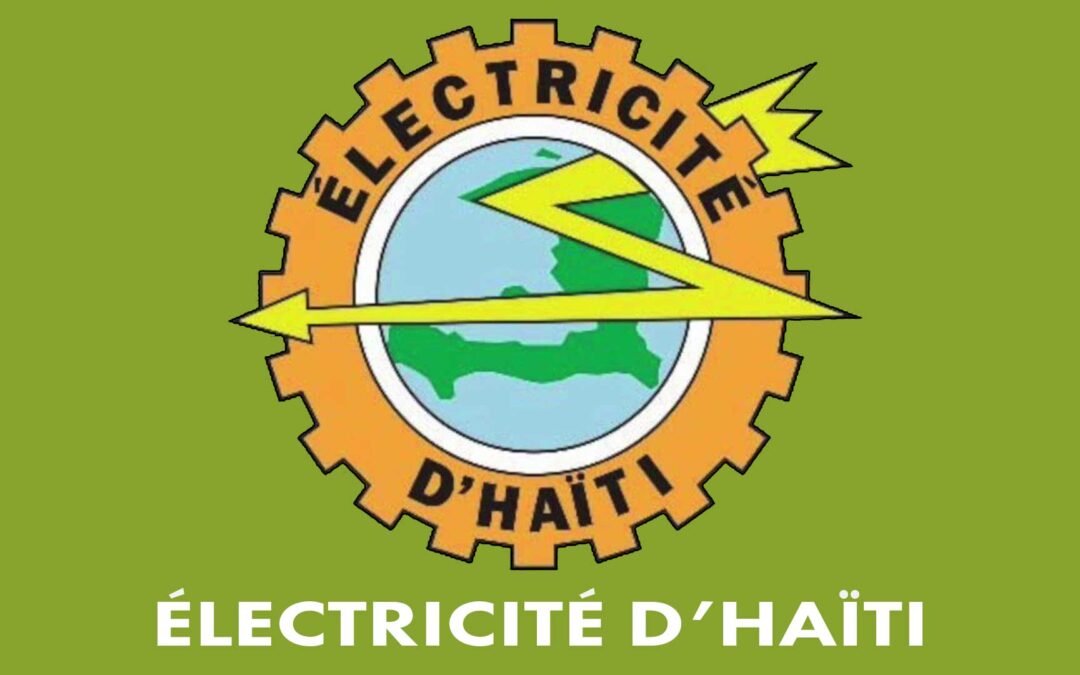
Jeff has been looking over Apex UMC electricity bills since we’ve been here, with the objective of understanding how the church can manage usage and costs even better. So it was natural on Wednesday for him to be “talking kilowatts” when we visited EDH (Electricité d’Haïti). Yes, we are not yet on the grid at the guesthouse and wanted to figure out how much it will cost to get connected, and of course, how much after we’re hooked up. The idea is that could charge the batteries with EDH rather than diesel via the generator. The guesthouse uses 1200 kilowatt hours per month, as compared to the Apex UMC office which uses 1600 kilowatt hours per month in the winter, running many more lights and computers.

But here, we have to know what kind of electricity we’re running to know which electrical appliances we can use – low power from our batteries for the lights, fans, booster pump and refrigerator or higher power from the generator for air conditioning, the well pump, the whole house fan, and the washing machines.Electricity is four times as expensive here as our residential rate in Apex, which is not the cheapest place in the US to buy power. Haitians pay 47 cents per kilowatt hour compared to our 11.We had heard it would cost $6000-7000 US to connect to EDH, so even though diesel is much more expensive, at $1.10 a kilowatt hour as compared to EDH at $.47, it could take a long time to justify the expense of paying for the poles and the hook up.Why is electricity so expensive? A little research tells some of the story:
- According to some pre-earthquake numbers that we suspect are still quite accurate, EDH has the power producing capacity of 270 megwatts.
- The demand is more like 550 megawatts, and some people estimate that EDH only produces about half its capacity because of maintenance outages at its old plants. (This means that those who are connected to the grid get power only part of the day.)
- Haiti has 10.17 million people and 4 state-run plants, with most of their power produced by burning diesel or other fossil fuel. Their one hydroplant can operate only during the rainy season.
- For comparison, North Carolina with 9.753 million citizens has 131 power plants, and production capacity of almost 30,000 megawatts. Shearon Harris, near our house, produces over 900 megawatts.

We went to the EDH office in Leogane, a 20-minute walk into town, to find out the process and how to get an exact price for installation.The woman who helped us talked to Jeff in French, to me in Kreyol, and eventually a bit in English to us both. She never lost her patience.After explaining a few things, including the fact that they had no rate cards or other handouts that she could give us, she searched through her wallet for several minutes.The next thing we knew, she had found a business card and made a phone call. A few minutes later, a private contractor came to the EDH office and picked us up, drove us back to the guesthouse, and looked at our situation.He spoke to us in English, making it all so much easier. He said he’d send us an estimate for connecting us to EDH in the evening’s email. Then he got to work with his GPS to measure the distance to the poles out at the nearest intersection.It turns out the process here is for a private contractor to apply for the electricity connection, put up the poles, and then get EDH to do their inspection and sell the meter to the new customer.It’s not quite the same as the US, but so far it’s been friendly and efficient.We are now wondering about the cost for a solar installation, feeding our batteries directly, leaving the fossil fuel in someone else’s tank.

